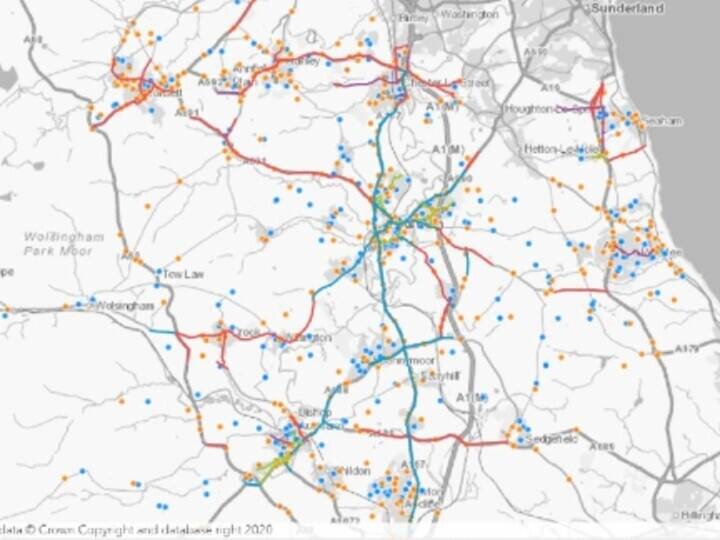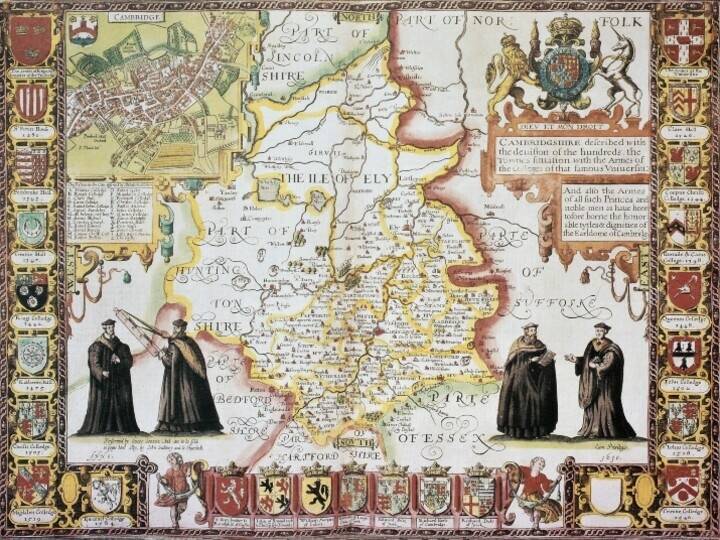Exemplar Award Winner- Best practice Improvement and Efficiency Award 2012: Northumberland County Council
Using a range of scripts, GIS and open source software, Northumberland County Council planned and implemented a range of data improvement projects to transform their LLPG.
The project was undertaken as the LLPG team had an idea about how to revolutionise the quality of the data held in their gazetteer. As well as improving the overall quality of the LLPG, the project was designed to bring efficiencies to all systems that the LLPG is linked to, with many examples that could be embraced nationally.
The main driver was to overhaul the BLPU data, including coordinates, classifications and positional accuracy. Also planned was the introduction of extra GeoPlace health checks and to automate the updating of the LLPG wherever possible.
How the project was carried out
Using open source GIS software, the team automatically identified where the BLPU points fell outside a MasterMap building feature, and moved these inside the building where possible. They also counted where more than one BLPU point, with either a primary or secondary residential classification, fell inside a building feature and updated their classification accordingly e.g. flat, sheltered accommodation etc.
They then identified how MasterMap building polygons over a certain size interacted with others, which enabled them to automatically update 99% of residential properties with their correct tertiary classification i.e. detached, semidetached or terraced.
Using the same software and mapping, they then generated new co-ordinates for all residential BLPUs and automatically centred them exactly in accordance with MasterMap, and automatically updated the Relative Positional Accuracy of these properties.
The software was also used to generate lines between numbered properties on all streets e.g. 1 High Street had a line to 2 High Street to 3 High Street, which enabled them to very quickly see if any streets were running out of order or any property points were in the wrong location.
Based on the USRN that the LPI held, lines were also generated between all properties and the nearest point on the ESU to which they were closest. This enabled them to see very quickly when properties were on the wrong street or where a new street needed generating.
Beyond GIS, live links were created to both Council Tax and Business Rates (NNDR) in order to get all new properties to match instantly. Through this they can know which properties have been removed from these datasets and can end the LLPG cross-references instantly, update certain classes where possible using the NNDR classification and use their live empty property data to update the BLPU status at the click of a button.
Also created was a web interface called LLPG Connect, which holds reports that go far beyond the GeoPlace health checks. By cross-referencing against a number of other councils held databases such as Council Tax, properties can be flagged that are derelict or empty and made available to users such as the Empty Homes Strategy Team. Properties are also flagged if it is felt that Council Tax or Business Rates need to consider the possibility of bringing them into their respective lists.
Finally, an LLPG search facility was placed on the intranet with the option to report a problem with the address held. The user can change an incorrect classification of a property, and can choose one of the BS7666 classifications from a drop down menu which automatically produces a script that can be run to update the LLPG.
Outcomes
The main outcome of the project has been the savings. Based on employing someone to do the work, the council has saved an estimated £24,440 on classifying/ moving the points and registering empty properties. Additionally, there are also on-going savings of approximately one hour per day which equates to £2,600 per year.
The council used scripting and open source software in an innovative way to automatically bulk update the majority of BLPUs. These scripts can be made public and so there is no reason why any authority in the DCA could not also do this.
In the future, any residential BLPU point that is in use and is not within a building feature can be automatically sent to the Ordnance Survey for surveying (to fill in the gaps in MasterMap). This could be done nationwide by authorities that meet certain standards, and transform the way they interact with the OS.
Key Benefits
• capital savings of £24,440 and revenue savings of £2,600 per year
• as a result of the work, the LLPG is at a superb standard
• hundreds of man hours saved by automating Council Tax and Business Rates changes into the LLPG • LLPG Officers have more time to advance LLPG integration with other systems
• repeatable process that could be used by other councils
• can automatically classify residential BLPUs to tertiary level
• can automatically move BLPU points to exact centre of building
• can automatically update BLPU Positional Accuracy
• can generate lines to check data accuracy



